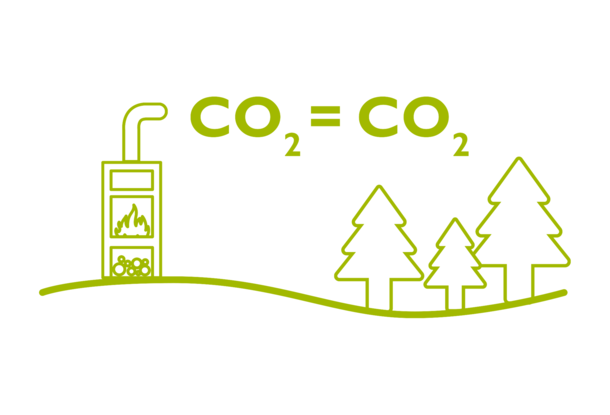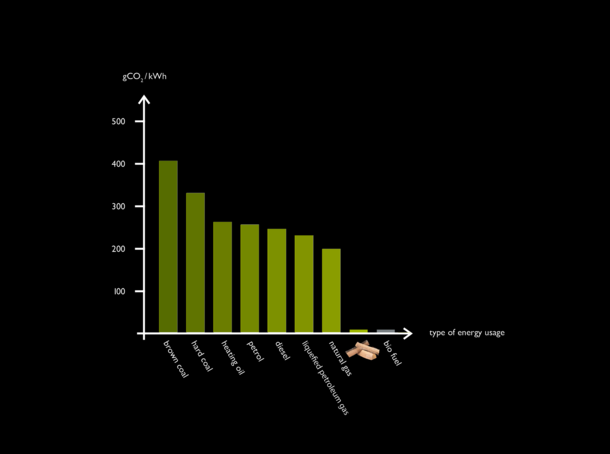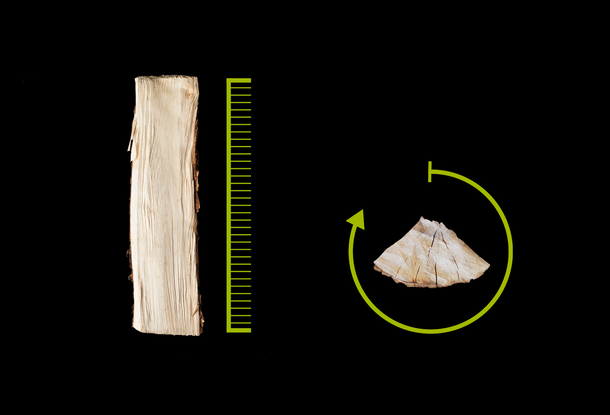Wood is a renewable raw material that, when burned, releases CO₂ that the tree absorbed during its growth. This process can, when the wood comes from sustainably managed forests, contribute to a circular carbon cycle. During combustion, the CO₂ is released all at once, while with natural decomposition, it happens gradually. However, the CO₂ released during natural decomposition cannot be used as a replacement for fossil fuels like natural gas. Under specific conditions, such as in low-oxygen environments, natural decomposition can also produce methane (CH₄), which is a more powerful greenhouse gas than CO₂. Efficient burning and responsible wood harvesting are therefore essential to utilize wood as an energy source in a sustainable and environmentally conscious way.
